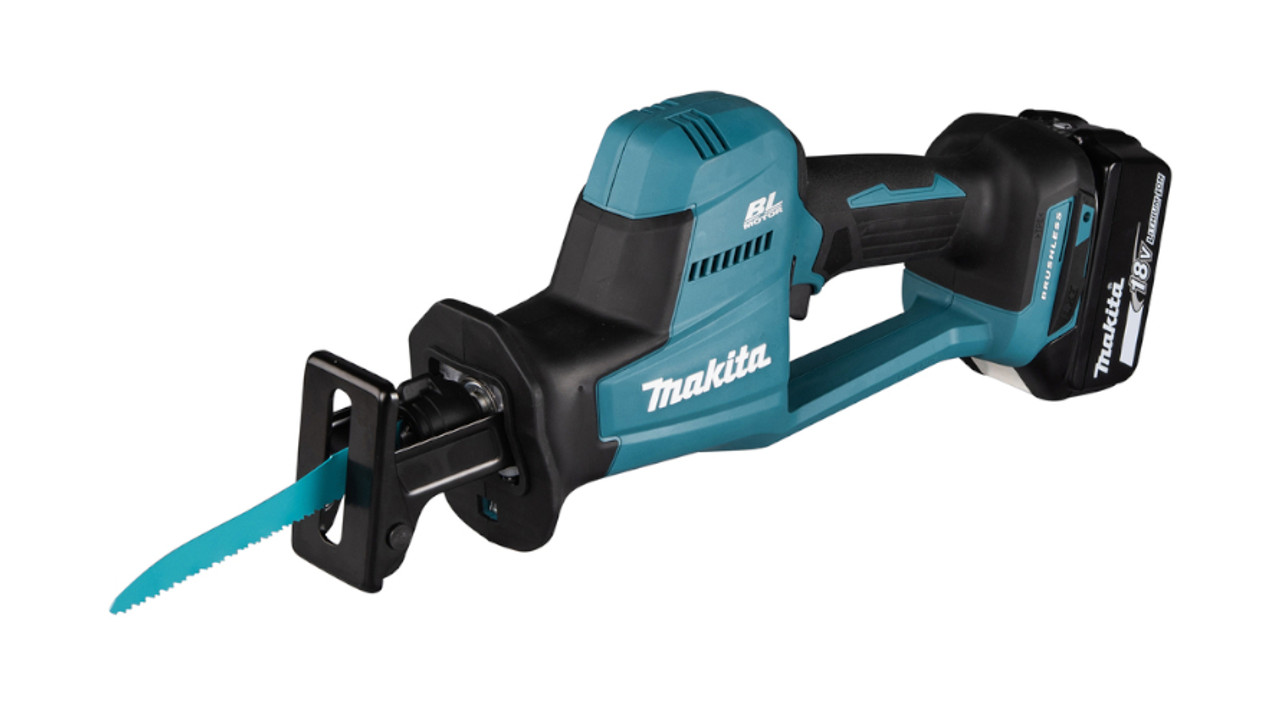-

-

-

-
 SAVE 27%
SAVE 27%Einhell 18V Power X-Change Reciprocating Saw - Body Only
Was £62.95 inc. VAT£46.24 inc. VATWas £52.46 ex. VAT£38.53 ex. VAT -

Makita DJR187Z 18V LXT BRUSHLESS Reciprocating Saw Body Only Bare Naked Unit
£219.00 inc. VAT£182.50 ex. VAT -

DeWALT DCS389X2 54V XR FLEXVOLT Reciprocating Saw 2x 9Ah Battery Kit
£539.99 inc. VAT£449.99 ex. VAT -

-

-

-

-

-

DeWALT DCS369N 18V XR BRUSHLESS Sub Compact Reciprocating Saw - Body Only
£169.00 inc. VAT£140.83 ex. VAT -

-

Bosch GSA18VLIN 18V Reciprocating Saw with L-BOXX Carry Case - Body Only
£217.99 inc. VAT£181.66 ex. VAT -

-

-

Makita DJR188Z 18V LXT Compact BRUSHLESS Reciprocating Saw - Body Only
£173.99 inc. VAT£144.99 ex. VAT
What is a reciprocating saw and what is it used for?
A reciprocating saw is a versatile power tool used in construction and demolition. It has a straight blade that moves back and forth rapidly, cutting through wood, metal, and plastic with ease. They are ideal for fast cuts where precision is less important, such as removing old structures.
How do I use a reciprocating saw?
Wear safety goggles and gloves, then choose the correct blade for your material. Secure the workpiece, hold the saw firmly with both hands, and position the blade at your cutting angle. Start the saw and let it work through the material without forcing it. Maintain a steady pace and always unplug the saw before changing blades or making adjustments.
How to cut straight with a reciprocating saw?
Cutting straight can be challenging, but accuracy improves if you:
- Use a guide, such as a clamped straight edge
- Mark the cut line clearly with pencil or chalk
- Choose a fine-toothed blade for cleaner cuts
- Keep a firm grip and steady hands
- Practice on scrap material if you are new to the tool
How long do reciprocating saw blades last?
Blade life depends on the material, frequency of use, and blade quality. A blade may last only a few cuts or several weeks of regular use. Replace blades when they show dullness, bending, or wear. Cleaning after use helps extend their lifespan.
Are reciprocating saw blades universal?
Most reciprocating saws use a standard 12.7 mm (0.5 inch) shank, making many blades compatible. However, some saws need specific blade types or sizes. Always check your saw’s specifications. Blades are also designed for different materials, so choose the right one for your task to ensure the best performance.



